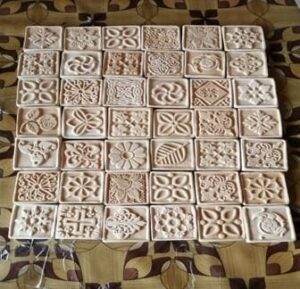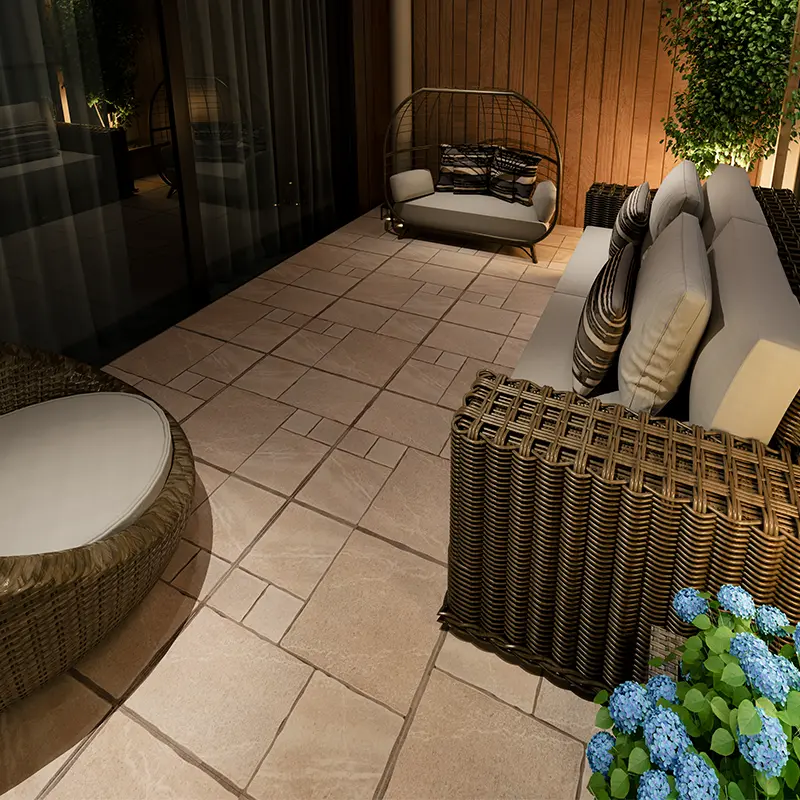Today, ceramic tiles are inseparable materials in the construction and design of decoration. Meanwhile, the market for these products is very popular. Countries that need more resources to make building materials such as tiles and ceramics use imported tiles. Iranian are one of the best choices for importing; which has a high-quality level following international standards.
But have you ever wondered which type of tile or ceramic suits you the most? In this article, we want to talk about the types of Iranian tiles and ceramics. If you decide to buy tiles, we recommend staying with us until this article’s end.
Different Types of Iranian Tiles and Their Characteristics
The Iranian tile art and high-quality tiles has been common in Iran. We see expensive works of this architectural element and decorations in most religious and social centers built at that time without technology. An example of the quality of Iranian tiles is using lead and tin combined colors, which creates high durability and preserves beauty after many years.
Iranian mosaic tile, Moaghli tile, Minai tile, and seven-color tile are among the Iranian tiles made by the hands of tile artists. The feeling these tiles give to the space is stunning and special. It is interesting to know that the types of arrangement of tiles also differ in terms of architecture. Grid tiling and Muqarnas tiling are among these arrangements.
Grid and Moqrans tiling
Certainly, Persian tiling is the best and most excellent way architects have invented to decorate buildings. The art of tile has been used to such an extent in the buildings of Iran after Islam that hardly any official building can be seen without the beautiful art of tile work.
Old Iranian tiles
Tiling in Iran started from the ancient city of Bishapur. Iranian tiling was first used as one of the components of wall decorations in palaces and holy places in the Achaemenid, Parthian, and Sasanian periods. At that time, Iranian handmade tiles were produced from cut stone pieces. In that era, tiles were painted and used as mosaics to decorate the city and royal palaces. The mosaic work was probably brought to Iran during the war of Shapur I with Valerian and the presence of Roman prisoners in Iran.
Types of Old Iranian tiles
Now that we know the first appearance of tiles and tiling in Iran, it is better to know that this art developed uniquely, and Iranian designs and arrangements expanded after that. Zarin Fam tile, mosaic tile, Muqarnas tile, Minayi tile, and Seven-color tile are among Iranian tiles made by artisans and are actually Iranian handmade tiles. The installation of these tiles gives a feeling to the space that is very stunning and special.
Iranian handmade tile
Handmade tiles are unique and special due to the art and innovation used in their production. These tiles were widely used in various buildings and structures before industrialization. Even today, Iranian handmade tiles with excellent quality and artistic designs are used to decorate and beautify floors, walls, and any part of the environment.
It is interesting to know that the types of handmade tiles are also different in terms of architecture. Lattice tiling and Muqarnas tiling are among these arrangements. Certainly, Iranian tiling is the best and most excellent way that the architects of this land invented to decorate buildings. Tile work, derived from the art of the hands of experienced masters, has spread to such an extent in post-Islamic Iran that hardly any official building can be seen without stunning tile designs.
In the following, we will see the development of Iranian tile art from generation to generation.
The evolution of Iranian tiles and tiling
It is said that the flourishing period of authentic Iranian tiling was in the early centuries after Islam. However, before Islam, this art was common in decorating various spaces.
Iran’s artwork is so unique and strong that the old works with the combined colors of lead and tin remain attractive after many years.
Iranian tile work during the Seljuk Empire
The art of tiling developed as an important decorative art during the Seljuk period and the 5th century. In post-Islamic Iran, the Seljuk period was the beginning of the use of Iranian tiles in religious structures.
Iranian tile work during Ilkhanids
It is said that the Ilkhani rulers attached great importance to the original art of Iranian tiling. For this reason, the Ilkhani era is considered a turning point for Iranian tile art. From that period onwards, Iranian tiling has increased in the design and decoration of religious and non-religious places.
Iranian tiling in the Timurid Empire
The art of gilding entered Iranian tiling during the Timurid period. This art quickly gained many fans due to its high execution capacity in tiling. Goharshad Mosque is an example of tiles designed in the Timurid era. Types of tiling during the Timurid Empire:
- Individual underglaze tiling
- Seven-color tiling and single-color painting glaze
- Marble tile and construction method
Most of the Goharshad mosque tiles are covered with mosaic, geometric and Islamic motifs. In Slimi’s designs, the artist was inspired by the twisting of plant stems, and the tiles decorated in this way include curved and circular lines repeated with or without parallel.
Iranian tile work in the Safavid dynasty
Decoration with the art of tiling became popular in places such as mosques, caravanserais, palaces, tombs, baths, markets, and schools in the Safavid era, and there was a great development in Iranian tiling.
Iranian tile work in the Qajar dynasty
Iranian tile work in the Qajar era was one of Iran’s most important and beautiful handicrafts. In this era, tiles were used to decorate buildings, especially on the walls of rooms and halls.
In the Qajar era, Iranian tiles were made by hand and had beautiful textures and artistic designs. Beautiful and rich colors, motifs of flowers, animals, and various geometric shapes were used in Qajar tiles. The changes made at this time compared to the previous period, i.e., the Safavid period, in the art of Iranian tiling, are mainly the result of the cultural connection between the countries where They had a political effect in Iran for a while.
The influence of Western taste and modernity used in Iranian tiling has started since the Qajar era. After that and during the Pahlavi period, we see the industrialization of tile production in Iran.
Types of modern Iranian tiles
Generally, Iranian tiles are divided into two groups: porcelain and non-porcelain. The difference between these two types is in the heat and degree of firing, which is why porcelain types have higher resistance when exposed to high temperatures.
Read more: Understanding the Differences: Ceramic vs. Porcelain Tiles
Porcelain is one of the types of Iranian tiles; both dimensions and strength are higher than other tiles. The reason for the resistance of this type of ceramic is that it is dense and impenetrable. Of course, the price of porcelain tiles is higher than other tiles. Types of porcelain and non-porcelain tiles are also divided into other groups according to the type of glaze, design, and firing method, which we will examine further.
Read more: Top Iranian Ceramic and Porcelain Tile Manufacturers
Glazed tiles
It is interesting to know that the main difference between tiles and ceramics is their glaze. Tile is one of the glazed products, but ceramic can be seen as both glazed and unglazed. The glaze is usually spread on the tile after the first firing. By adding glaze, a glassy surface makes the tile more shiny and easier to clean. Because of these features, glazed tiles are used in bathrooms, kitchens, and all areas exposed to more pollution.
Tile glaze
Mineral tiles
Due to mineral soil with an orange base, mineral tiles are usually orange or red. These tiles are unglazed, so that they will need sealant during installation. This type of tile is suitable for closed environments and is less exposed to pollution and traffic. Mineral tiles are usually used in commercial centers for their durability and reasonable price.
Mineral ceramics
Clay tile
Clay tile is one of the old Iranian tiles that has kept its place even today. Due to its high thermal tolerance, this type of tile is used in furnaces and ovens. The method of making clay tiles is to bake red clay at a very high temperature, which reduces pores and increases strength. Clay tile is a type of mineral tile produced in dimensions of 15 to 30 cm and with a thickness equal to 5.1 cm.
Clay tile
Paving tile
Another mineral tile that is made of red clay is stone pavement tile. This type of tile is baked at very high temperatures and has good resistance to different weather conditions. Of course, it should be noted that the thickness of the pavement tiles is also high. The appearance of these tiles is almost like bricks, and their thickness is less than bricks. These tiles are used for building floors, patios, and sometimes bathrooms and must be sealed after installation.
Paving tile
Ceramic tiles
All the steps of making ceramic tiles are done in high heat. The material used in this tile is made of clay or mineral, produced in two ways, glazed and unglazed.
Mosaic tile
Another type of Iranian tile, which has a much smaller size (at least 5 cm), is a mosaic tile, which, like ceramic tiles, is available in two types: glazed and unglazed. Mosaic tiles are often made of porcelain and have high resistance. For this reason, this type of Iranian tile is mostly used in wet environments such as bathrooms and swimming pools.
Bathroom floor mosaic
Using Iranian Tiles in Decoration and Architecture
As we have read so far, the art of tiling in Iranian houses and the decoration of various environments has been popular since the past and continues to this day.
It is usually thought that tiling is only used for kitchens and bathrooms. Still, tiles play an important role in the interior decoration of the house and create a different and colorful environment for us.
Types of Iranian Tiles in Decoration
Generally, interior decoration tiles are divided into decorative and practical groups.
– Decorative types, as is known, are patterned or colored tiles used to create more beauty and decorate the environment. There are very diverse and high-quality Iranian decorative tiles that can be ordered according to the color and arrangement of the environment.
modern decoration
– practical Iranian tiles are also used for floor and wall covering in different spaces. They usually use different types of porcelain to provide strength, high quality, brilliance, and beauty.
Today, Iranian tiles are mostly produced in the form of ceramic or porcelain tiles, and they are sold in the domestic and international markets in more modern designs such as cement look tiles, marble look tiles, wood pattern tiles, mosaic pattern tiles, and brick patterns tiles.
Unique Features of Iranian Tiles That Set Them Apart
Unique features can be seen in the ancient and traditional Iranian tile productions. Even today, Iranian ceramic and tile manufacturers, inspired by old architects, offer high-quality and long-lasting tiles. This issue is one of the reasons for the superiority of Iranian tiles and ceramics in the world market. In the following, we will learn the features and advantages of these types of tiles.
The strength and durability of Iranian tiles are famous.
With rich natural resources, an expert workforce, and modern equipment and machinery, Iranian tiles are produced with world-class technology and are presented with the best quality.
Iranian tiles have a fixed color.
Despite the high-quality glazes in Iranian tiles, we will see the durability of the color and strength of the tile, even against chemicals.
Iranian tiles are easy to clean.
One of the best advantages of ceramic tiles is that they are hygienic. This is why these products are used in places like bathrooms.
In choosing Iranian tiles, you have no limitation on design and color.
Many different designs and colors can be seen in Iranian tiles and ceramics, which are marketed in the best quality and according to international standards.
Read More: 5 Advantages of Using Iranian Tiles in Your Home Renovation
Popular Iranian Tile Patterns and Colors
Color and design in modern Iranian tiles
As we have seen, the designs in Iranian tiles are very diverse and eye-catching. This diversity is combined with high quality and strength, which has created a special place for Iranian brands in the world market. The use of high-quality Iranian mineral material and manufacturing and design with the world’s best methods and technology, in combination with the art and creativity of Iranian designers, gives an extraordinary result.
If you are an investor in the tile and ceramic market and are interested in Iranian designs, contact us to receive services and free advice on buying Persian tiles at a wholesale price. As a final tip, if you want to know more about Iranian tile export and how to import tile from Iran, you can read the articles on our website or contact us.






























6 Responses
What are some common motifs found in Persian tile designs?
Common motifs include geometric patterns, floral designs, calligraphy, and representations of animals and nature.
Can I learn more about the symbolism behind Persian tile designs?!
Absolutely! The symbolism behind Persian tile designs often reflects aspects of Iranian culture, history, and religious beliefs.
Dear Fatemeh, will all respect 🫡 I think you are beautiful and your glasses look nice on you. 🙂 I was hoping to find some nice traditional tiles to adorn the front of my house. Some modern traditional ones or Iranian tile work during Ilkhanids.
I live in Mexico, can you help me find some and ship them to me please?
Have a nice day 😊
Kind regards,
Jean Claude Dupre
Thank you for your kindness. ofcourse we can supply you any kind of tiles that you want but also I’m sorry to say that our minimum order capacity is 1 container (about 1200 to 1600 m2)